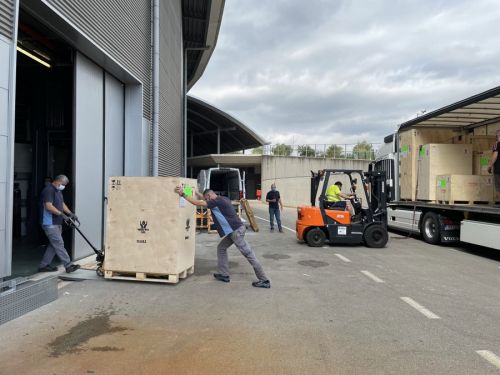On last August 31, the Alba Synchrotron, the icon of our Park, received the Glacios high-voltage transmission cryo-electron microscope (Cryo-TEM, 200 kV) from the Czech Republic. This state-of-the-art equipment will be part of the new advanced microscopy platform located in the Alba Synchrotron itself, which will provide new opportunities to both research groups and companies, and will make Barcelona a hub of excellence in Europe for scientific collaboration in this field.
The new Glacios microscope is intended for biological applications and allows observing the structure of biomolecules at atomic scale without the need to obtain crystals. It is a microscope suitable for biological sample screening and atomic-level structural data acquisition of large molecular and cellular complexes. It may be used, for example, to study the external structure of coronavirus, such as the one responsible for currently COVID-19 pandemic, or the receptors it uses to enter cells. The acquisition is made possible thanks to the joint action of the Molecular Biology Institute of Barcelona (IBMB-CSIC, project head), the Alba Synchrotron, the Institute for Research in Biomedicine of Barcelona (IRB), the Spanish Council for Scientific Research (CSIC), the Centre for Genomic Regulation of Barcelona (CRG), the Autonomous University of Barcelona (UAB) and the Barcelona Institute of Science and Technology (BIST), and the support of ERDF European funds, granted by the Secretariat of University and Research of the Department of Business and Knowledge of the Generalitat de Catalunya.
In addition to Glacios, the platform will also incorporate a monochromated transmission electron microscope with aberration correctors and a sample preparation equipment specially designed for materials science and atomic-scale studies. In this case, the project involves the Catalan Institute of Nanoscience and Nanotechnology (ICN2, project head), the Alba Synchrotron, the Spanish Council for Scientific Research (CSIC), the Institute of Materials Science of Barcelona (ICMAB-CSIC), the Autonomous University of Barcelona (UAB) and the Barcelona Institute of Science and Technology (BIST), and it has also received financial support from ERDF funds.










